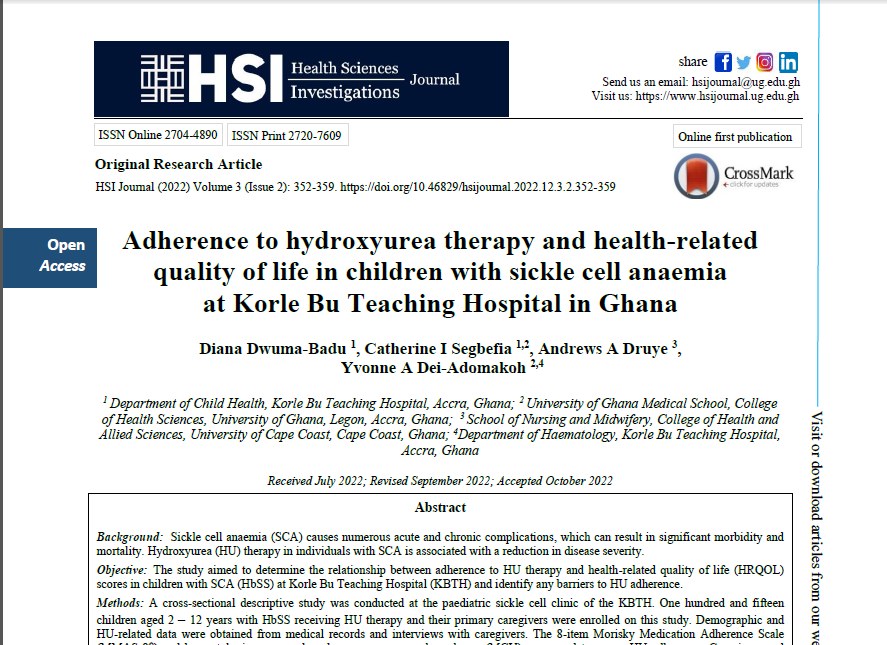Adherence to hydroxyurea therapy and health-related quality of life in children with sickle cell anaemia at Korle Bu Teaching Hospital in Ghana
Adherence to hydroxyurea and quality of life in children with sickle cell anaemia diagnosis
Abstract
Background: Sickle cell anaemia (SCA) causes numerous acute and chronic complications, which can result in significant morbidity and mortality. Hydroxyurea (HU) therapy in individuals with SCA is associated with a reduction in disease severity.
Objective: The study aimed to determine the relationship between adherence to HU therapy and health-related quality of life (HRQOL) scores in children with SCA (HbSS) at Korle Bu Teaching Hospital (KBTH) and identify any barriers to HU adherence.
Methods: A cross-sectional descriptive study was conducted at the paediatric sickle cell clinic of the KBTH. One hundred and fifteen children aged 2 – 12 years with HbSS receiving HU therapy and their primary caregivers were enrolled on this study. Demographic and HU-related data were obtained from medical records and interviews with caregivers. The 8-item Morisky Medication Adherence Scale (MMAS-8©) and haematologic response based on mean corpuscular volume (MCV) were used to assess HU adherence. Caregivers and children aged 8 - 12 years also completed the Paediatric Quality of Life Inventory (PedsQLTM) SCD-module version 3.0. For children aged 5 – 7 years, the PedsQLTM SCD-module version 3.0 was administered by interview.
Results: Seventy-nine (68.7%) of children had high adherence to HU therapy using the MMAS-8©. The mean PedsQLTM scores were 96.9 ± 6.0 and 96.3 ± 7.2 for the child (n = 91) and caregiver (n = 114), respectively. Children with high HU adherence had significantly higher PedsQLTM scores than those with low or moderate adherence. Neither child's current MCV nor mean change in MCV correlated with child or caregiver PedsQLTM scores. The main barrier to HU adherence identified by children aged 8 years was forgetfulness, while the cost of HU was the main barrier to adherence reported by caregivers.
Conclusion: Children with SCA with high adherence to HU had the highest HRQOL scores using the PedsQLTM SCD-module version 3.0. Routine assessment of barriers to HU adherence can provide important information to help guide relevant interventions.


